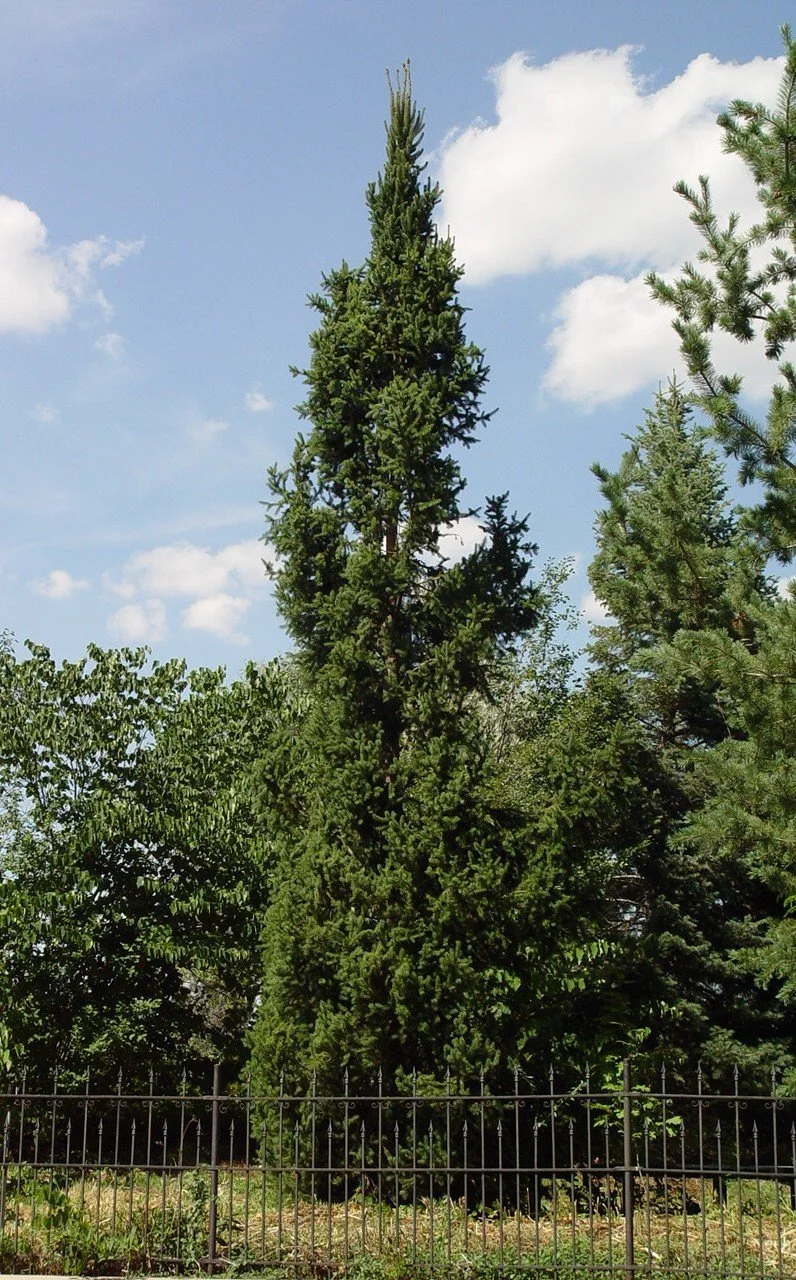Norway spruce (Picea abies)
Norway spruce in Denver at Denver Botanic Garden York Street.
Species info:
Leaves: Stiff, four-sided needles, ½–1 inch long, shiny dark green, attached singly to raised woody pegs (sterigmata). Persist 3–4 years.
Leaflets: N/A (needles, not leaflets)
Leaf Surface: Glossy green; stiff and sharp-pointed.
Bark: Young bark scaly and reddish-brown; older bark thickens into gray-brown flaky plates.
Twigs: Slender to medium thickness, shiny orange-brown, smooth and hairless with loose orange-brown scales.
Buds: About ¼ inch long, rosette-shaped, reddish-brown, non-resinous.
Flowers: Monoecious; male flowers infrequent and axillary; female flowers reddish-pink, terminal, distributed throughout the crown.
Fruit: Cylindrical cones 4–6 inches long, 1–1½ inches wide; purplish when young, maturing to light brown in fall; seeds brownish-black, 1/6 inch long with a ½-inch wing.
Botanical: Picea abies
Family: Pinaceae
Mature Height: 40–60 feet
Canopy Spread: 25–30 feet
Foliage Type: Evergreen
Tree Shape: Pyramidal; dense when young, becoming more open and graceful with upward-sweeping branches as it matures
Growth Rate: Fast in youth, slowing somewhat with age
Fall Color: Evergreen
Water Use: Moderate; prefers consistent moisture
Hardiness: Zones 2–7
Soil Preference: Prefers moderately moist, sandy, well-drained, acidic soils; tolerates a range of conditions but dislikes hot, dry climates
Wildlife Value: Provides shelter and nesting for birds and small mammals; cones supply food for squirrels and crossbills
Pests/Pathogens: Can be affected by budworm, borers, red spider mite, tip weevil, and spruce gall aphid; generally resilient in cooler, moist climates
Planting Recommendations: Recommended for protected sites; does not tolerate windy sites.
Information Sources:
Michael A. Dirr. Dirr’s Encyclopedia of Trees and Shrubs. Timber Press. 2011
Mark H. Brand, Picea abies -- Plant Page (University of Connecticut Plant Database of Trees, Shrubs, and Vines)
Virginia Tech, Department of Forestry, College of Natural Resources, Picea abies Fact Sheet
Michael Dirr, Manual of Woody Landscape Plants (University of Georgia, 1990)


